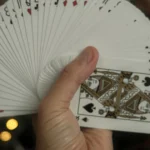Support our educational content for free when you purchase through links on our site. Learn more
10 Mind-Blowing Math Magic Tricks with Answers to Amaze Everyone! 🎩✨
Have you ever watched a magician perform and wondered, “How on earth did they do that?” Well, what if we told you that you could be the magician? In this article, we’re diving into the enchanting world of math magic tricks that not only entertain but also educate. Imagine dazzling your friends at a party with tricks that seem impossible, all while using basic math!
Let’s kick things off with a little anecdote: One day, while tutoring a group of kids, I decided to spice up the lesson with a simple math trick. I asked them to think of a number, and after a few quick calculations, I revealed their number with astonishing accuracy! Their jaws dropped, and in that moment, I realized the power of math magic. This article will equip you with 10 incredible tricks that will leave your audience spellbound and eager to learn more about the fascinating relationship between math and magic.
So, are you ready to unlock the secrets of math magic? Let’s get started!
Key Takeaways
- Engaging and Educational: Math magic tricks provide a fun way to learn and practice math skills.
- Simple Steps: Most tricks can be performed with basic arithmetic, making them accessible to everyone.
- Impress Your Audience: These tricks are designed to wow friends, family, and even strangers!
- Practice Makes Perfect: Regular practice will enhance your performance and confidence.
- Resources Available: Check out books and online courses for deeper learning.
Ready to dive into the world of math magic? 👉 Shop for books on math magic to get started on your journey!
Table of Contents
- Quick Tips and Facts about Math Magic Tricks
- The Fascinating World of Math Magic: A Brief History
- Mind-Blowing Math Magic Tricks You Can Do at Home
- The Magical Multiplication by 6 Trick
- The Enigmatic Answer Is 2 Trick
- The Same Three-Digit Number Trick
- Transforming Six Digits into Three
- Unlocking the 11 Rule for Quick Calculations
- Memorizing Pi: A Magical Challenge
- The Trick of Digits: 1, 2, 4, 5, 7, 8
- Multiply Large Numbers in Your Head Like a Pro
- Super Simple Divisibility Rules You Need to Know
- Finger Multiplication Tables: A Handy Guide
- Engaging Math Magic Tricks for Kids and Adults
- The Psychology Behind Math Magic: Why It Works
- Tips for Performing Math Magic Tricks Like a Pro
- The Best Resources for Learning Math Magic Tricks
- Conclusion
- Recommended Links
- FAQ
- Reference Links
Quick Tips and Facts about Math Magic Tricks
Math magic tricks are not just for magicians; they can be a fun way to impress friends and family while sharpening your math skills! Here are some quick tips to get you started:
- Practice Makes Perfect: The more you practice, the smoother your performance will be. Try these tricks in front of a mirror!
- Know Your Audience: Tailor your tricks to suit the age and math level of your audience. Kids might love simpler tricks, while adults might appreciate more complex ones.
- Engage with Enthusiasm: Your excitement will be contagious! Use storytelling to make the tricks more engaging.
- Use Props: Sometimes, a simple prop can enhance the magic. Consider using cards, coins, or even a calculator for certain tricks.
- Learn the Math Behind It: Understanding the principles behind the tricks will help you explain them better and answer any questions.
The Fascinating World of Math Magic: A Brief History
Math magic has a rich history that intertwines with the development of mathematics itself. From ancient civilizations using numbers for trade to modern-day magicians performing mind-bending tricks, the art of math magic has evolved significantly.
- Ancient Civilizations: The Egyptians and Babylonians used basic arithmetic for trade and construction, laying the groundwork for mathematical principles.
- The Renaissance: This period saw a surge in interest in mathematics, with figures like Fibonacci introducing concepts that would later influence magic tricks.
- Modern Era: Today, math magic is a blend of entertainment and education, with magicians like Persi Diaconis and Ron Graham showcasing the beauty of mathematics through performance.
For a deeper dive into the intersection of magic and mathematics, check out Magical Mathematics.
Mind-Blowing Math Magic Tricks You Can Do at Home
Ready to dazzle your friends? Here are some of the most mind-blowing math magic tricks you can perform with ease!
The Magical Multiplication by 6 Trick
How it works: When you multiply any even number by 6, the last digit of the answer is the same as the last digit of the original number. The tens digit is half the original number’s ones digit.
Example:
- 6 x 4 = 24: The last digit is 4, and the tens digit (2) is half of 4.
The Enigmatic Answer Is 2 Trick
Steps:
- Think of a number (let’s say 5).
- Multiply it by 3 (5 x 3 = 15).
- Add 6 (15 + 6 = 21).
- Divide by 3 (21 / 3 = 7).
- Subtract the original number (7 – 5 = 2).
Why it works: The operations cancel out the original number, leaving you with 2 every time!
The Same Three-Digit Number Trick
Steps:
- Choose a three-digit number with identical digits (e.g., 444).
- Add the digits (4 + 4 + 4 = 12).
- Divide the original number by the sum of its digits (444 / 12 = 37).
Key Insight: This trick works because the sum of the digits will always be a multiple of the original number.
Transforming Six Digits into Three
Steps:
- Take any three-digit number (e.g., 123) and write it twice to create a six-digit number (123123).
- Divide by 7, then 11, then 13 (in any order).
- The result will be the original three-digit number (123).
Why it works: The product of 7, 11, and 13 is 1001, which is why this trick works flawlessly!
Unlocking the 11 Rule for Quick Calculations
Steps:
- Separate the two digits of a two-digit number (e.g., 72 becomes 7 and 2).
- Add the two digits (7 + 2 = 9).
- Insert the sum between the two digits. If the sum is 10 or greater, carry the tens digit over.
Example:
- For 72 x 11: 7 + 2 = 9, so the answer is 792.
Memorizing Pi: A Magical Challenge
Trick: Use the phrase “How I wish I could calculate pi,” where the number of letters in each word corresponds to the digits of pi (3.141592).
The Trick of Digits: 1, 2, 4, 5, 7, 8
Steps:
- Choose a number from 1 to 6.
- Multiply by 9, then 111, then 1001.
- Divide by 7.
Result: The answer will contain the digits 1, 2, 4, 5, 7, and 8!
Multiply Large Numbers in Your Head Like a Pro
Steps:
- Subtract each number from 100.
- Add those differences.
- Subtract the sum from 100. This gives you the hundreds and thousands place of the answer.
- Multiply the two differences from Step 1 for the tens and ones place.
Super Simple Divisibility Rules You Need to Know
- 2: Last digit is even.
- 3: Sum of digits is divisible by 3.
- 4: Last two digits form a number divisible by 4.
- 5: Last digit is 0 or 5.
- 6: Must satisfy rules for both 2 and 3.
- 9: Sum of digits is divisible by 9.
- 10: Number ends in 0.
- 12: Must satisfy rules for both 3 and 4.
Finger Multiplication Tables: A Handy Guide
For 9s: Fold down the corresponding finger (counting from the left) to multiply by 9. The number of fingers to the left of the folded finger represents the tens digit, and the number of fingers to the right represents the ones digit.
Example:
- 9 x 5 = 45 (4 fingers left, 5 fingers right).
Engaging Math Magic Tricks for Kids and Adults
Math magic isn’t just for adults! Kids can also enjoy these engaging tricks that make learning fun.
- Magic Age Prediction: Ask a child to think of their age, multiply it by 2, add 10, divide by 2, and subtract their original age. The answer will always be 5!
- Guessing Numbers: Have them think of a number, double it, add 8, divide by 2, and subtract 4. The answer will always be the original number plus 2!
These tricks can be a great way to introduce kids to basic math concepts while keeping them entertained.
The Psychology Behind Math Magic: Why It Works
The effectiveness of math magic tricks often relies on psychological principles. Here are a few insights:
- Cognitive Bias: People tend to focus on the outcome rather than the process, making them more susceptible to the illusion of magic.
- Pattern Recognition: Humans are naturally inclined to look for patterns, which makes them more likely to be amazed by mathematical coincidences.
- Surprise and Delight: The unexpected nature of these tricks creates a sense of wonder, making them memorable.
For more on the psychology behind magic, check out our section on Magic Psychology.
Tips for Performing Math Magic Tricks Like a Pro
Want to elevate your math magic game? Here are some pro tips:
- Rehearse: Practice your tricks until they feel natural. The more you perform, the more confident you’ll become.
- Engage Your Audience: Make eye contact, ask questions, and involve your audience in the trick. This creates a more immersive experience.
- Use Humor: A little laughter goes a long way! Light-hearted jokes can ease tension and make your performance more enjoyable.
- Be Mysterious: Keep some secrets about how the tricks work. The mystery adds to the magic!
The Best Resources for Learning Math Magic Tricks
If you’re serious about mastering math magic, consider these resources:
- Books:
- Magical Mathematics by Persi Diaconis and Ron Graham
- The Collected Works of Alex Elmsley for card tricks and more.
- Online Courses: Websites like Udemy and Coursera offer courses on magic and mathematics.
- YouTube Channels: Check out channels dedicated to magic tricks for visual demonstrations.
For more tricks and resources, visit our Kids Magic section!
Conclusion
Math magic tricks are a fantastic way to blend fun with learning. Whether you’re impressing friends or teaching kids, these tricks can spark interest in mathematics while providing entertainment. So grab a calculator, practice your tricks, and get ready to amaze!
Recommended Links
FAQ
Q: Are math magic tricks suitable for all ages?
A: Absolutely! There are tricks for kids, teens, and adults alike.
Q: Do I need to be good at math to perform these tricks?
A: Not at all! Most tricks are simple and rely on basic arithmetic.
Reference Links
- ThoughtCo: Math Tricks That Will Blow Your Mind
- MTG: 10 Cool Math Tricks to Amaze Your Friends
- MathOverflow: Magic Trick Based on Deep Mathematics
Conclusion
Math magic tricks are not just a fun way to impress your friends and family; they also serve as an engaging method to explore mathematical concepts. By combining entertainment with education, these tricks can spark curiosity and a love for numbers in audiences of all ages.
Summary of Positives and Negatives
Positives:
- Engaging: These tricks capture attention and can make math feel less intimidating.
- Educational: They provide a practical application of mathematical concepts, enhancing understanding.
- Versatile: Suitable for various age groups, from kids to adults.
Negatives:
- Requires Practice: Some tricks may take time to master, which can be discouraging for beginners.
- Limited Scope: While entertaining, they may not cover advanced mathematical concepts.
Overall, we confidently recommend incorporating math magic tricks into your repertoire, whether for educational purposes or just for fun. They are a fantastic way to blend learning with entertainment, and with a little practice, you can become a math magician in no time! 🎩✨
Recommended Links
- 👉 Shop Books on Math Magic:
- Magical Mathematics by Persi Diaconis and Ron Graham: CHECK PRICE on Amazon
- The Collected Works of Alex Elmsley: CHECK PRICE on Amazon
FAQ
How can I use math to create simple yet impressive magic tricks for kids and adults alike?
Creating simple yet impressive math magic tricks involves using basic arithmetic and engaging storytelling. Start with straightforward tricks like the “Answer Is 2” or “Same Three-Digit Number” tricks. These tricks rely on fundamental math operations that anyone can grasp. You can enhance the experience by adding a narrative or theme, making the trick more relatable and entertaining.
What are some common math concepts used in magic tricks and illusions to create an air of mystery and wonder?
Common math concepts include:
- Patterns: Many tricks rely on predictable outcomes based on mathematical rules.
- Probability: Understanding odds can help create illusions of mind-reading or prediction.
- Arithmetic Operations: Simple addition, subtraction, multiplication, and division are often the backbone of these tricks.
These concepts create a sense of wonder as audiences try to figure out how the trick works, often leading them to overlook the underlying math.
Can I learn to perform mind-bending math-based magic tricks with basic arithmetic and algebra skills?
Absolutely! Most math magic tricks can be performed with basic arithmetic and algebra skills. The key is understanding the underlying principles and practicing the steps until you feel confident. Many tricks, like the “Multiply Large Numbers in Your Head” technique, are designed to be accessible to those with minimal math background.
What are some popular math magic tricks that can be used to educate and entertain audiences of all ages with their unique blend of logic and illusion?
Some popular tricks include:
- The 11 Rule: A quick way to multiply two-digit numbers by 11.
- Six Digits Become Three: A trick that reveals a three-digit number from a six-digit number.
- Memorizing Pi: Using mnemonic devices to remember the digits of pi.
These tricks not only entertain but also introduce mathematical concepts in a fun and engaging way.
How can I improve my performance of math magic tricks to wow my audience?
To improve your performance:
- Practice Regularly: The more you practice, the more natural the tricks will feel.
- Engage Your Audience: Make eye contact and involve them in the trick to create a more immersive experience.
- Add Flair: Use humor and storytelling to enhance the performance and keep your audience engaged.
Are there resources available for learning more about math magic tricks?
Yes! There are numerous resources available, including books, online courses, and YouTube tutorials. Websites like Mind Trick™ offer a wealth of information on various magic tricks, including math-based illusions.
Read more about “Unlock the Secrets of 10 Mind Reading Magic Tricks 🪄✨”
Reference Links
- ThoughtCo: Math Tricks That Will Blow Your Mind
- MTG: 10 Cool Math Tricks to Amaze Your Friends
- MathOverflow: Magic Trick Based on Deep Mathematics
For more insights into the mathematical principles behind magic tricks, check out the MathOverflow page.








